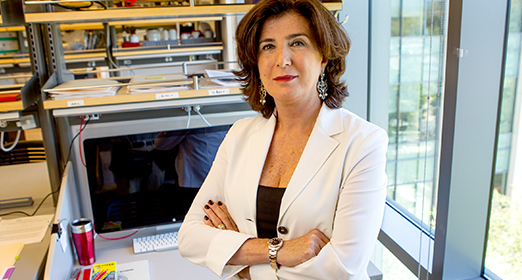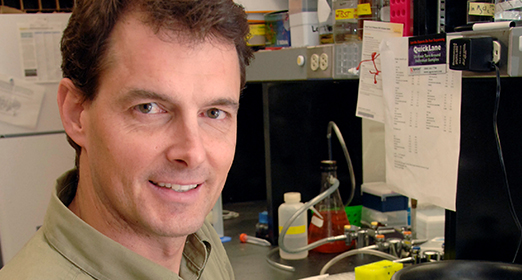Using stem cells and gene therapy to treat or cure disease may still sound like science fiction, but a recent scientific meeting here emphasized all the fronts on which it is moving closer and closer to fact.
“We’re entering a new era in medicine,” said Lloyd Minor, MD, dean of the School of Medicine, in his opening remarks at the first annual symposium of the school’s new Center for Definitive and Curative Medicine. Stanford researchers are poised to use stem cells and gene therapy to ameliorate a wide swath of diseases, from common diagnoses such as diabetes and cancer to rare diseases of the brain, blood, skin, immune system and other organs. Ultimately, the goal is to create one-time treatments that can provide lifetime cures; hence the “definitive and curative” part of the center’s name. Stanford is a leader in this branch of medical research, Minor said, adding “This is a vital component of our vision for precision health.”
Stanford has a long history of leading basic-science discoveries in stem cell biology, and is now engaged in studying many different ways those discoveries could benefit patients, said Maria Grazia Roncarolo, MD, who leads the new center. “Our job is to produce clinical data so compelling that industry will pick up the product and take it to the next stage,” Roncaraolo told the audience.
Among other event highlights:
- Ophthalmologist Jeffrey Goldberg, MD, PhD, reported that stem-cell techniques can generate replacements for damaged cells on the inner layer of the cornea. His team is now conducting early clinical trials of corneal cells that each have a magnetic nanoparticle attached. The magnetic cells are injected into the eye and held in place on the cornea with a magnetic eye patch. The researchers hope the technique may help some patients avoid corneal transplant.
- More people could receive bone marrow transplants if the procedure didn’t require toxic chemotherapy drugs, hematologist-oncologist Judith Shizuru, MD, PhD, told the audience. In a recently opened clinical trial, Shizuru and her colleagues are using antibody-based techniques in place of chemo to prepare children with severe combined immunodeficiency (better known as “bubble boy disease”) for bone marrow transplant.
- Seung Kim, MD, PhD, described how stem-cell research techniques are making it easier to understand how it might be possible to generate new pancreatic beta cells for individuals with Type 1 diabetes. On a related note, Kim’s colleague Hiromitsu Nakauchi, MD, PhD, recently showed that mouse pancreases could be grown in rats and used to treat diabetes in mice.
- Although sickle cell disease can now be treated with bone marrow transplants, many patients lack a matching donor, said Matthew Porteus, MD, shown above. His lab is studying how gene-editing techniques (including CRISPR) could allow scientists to fix the underlying genetic error directly in the patient’s body instead.
- Cancer immunotherapy experts like Crystal Mackall, MD, are endeavoring to make new treatments that cancer can’t outsmart. “Historically, we would go after tumors with poisons or targeted agents,” Mackall said. “What has changed is that we can also go after the host and change the way the host responds to the tumor.” Her team is engineering T cells, a class of immune cell, to prompt a cancer patient’s body to attack tumors that have stopped responding to traditional chemotherapy. Their work isn’t yet as successful as they want: Some tumor cells are able to evade the T cells and re-grow. But Mackall is optimistic. “We are at the end of the beginning,” she said.
More coverage of the day’s events is available in a story from the San Jose Mercury News that describes how Anthony Oro, MD, PhD, and his colleagues are fighting epidermolysis bullosa, a devastating genetic disease of the skin. Oro closed his talk with a slightly goofy photo of a man getting a spray tan. It got a laugh, but his point was serious: “Our goal for the cell therapy of the future is spray-on skin to correct a horrible genetic disease.”
Ambitious? Yes. Science fiction? In the future, maybe not.
This story originally appeared on SCOPE.

